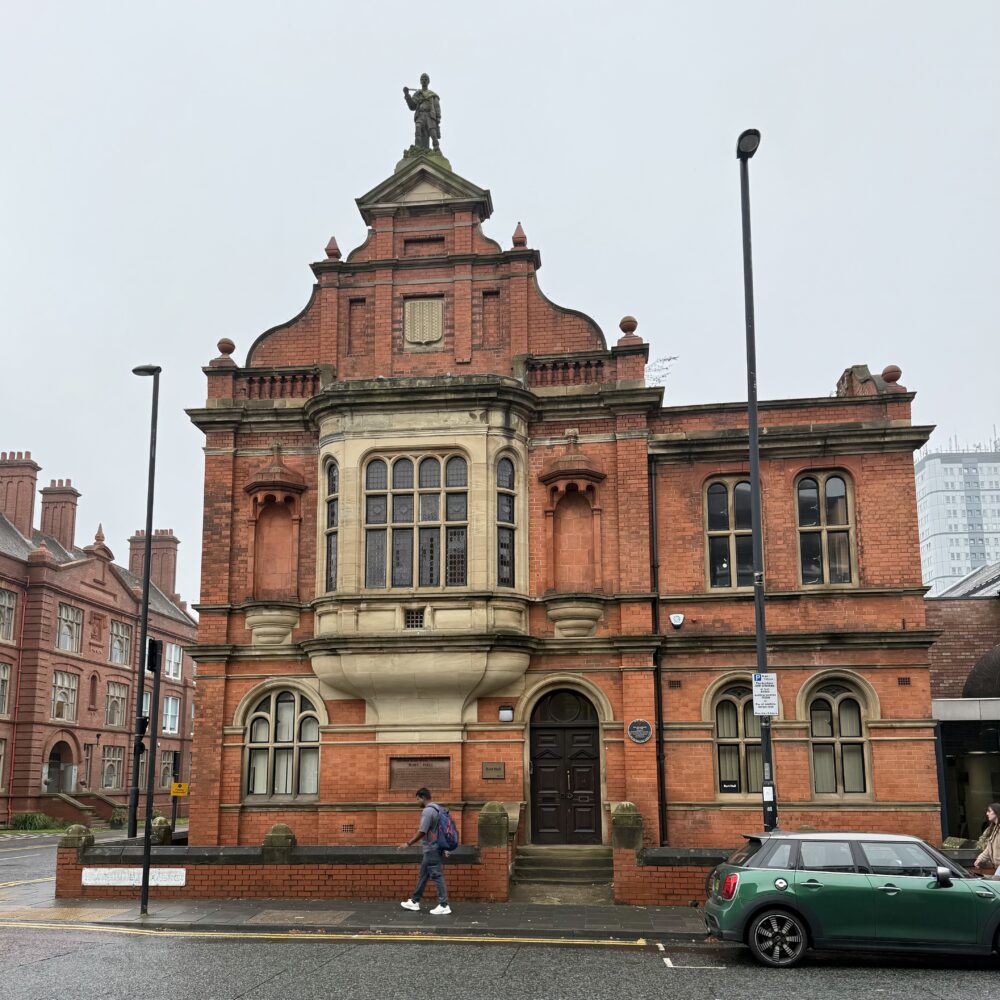Burt Hall

Born in 1837, Thomas Burt began working as a trapper boy, opening and closing trapdoors to let mining cars through, at the Haswell Pit at the age of 10. Just eighteen years later, he was elected the General Secretary of the Northumberland Miners’ Association—a post he held for the following fifty years.
In 1874, he was elected to Parliament, partly on a platform of truly universal suffrage—radical for a time when even campaigning for all men to have the vote was seen as bold. He lived until he was 84, but even that wasn’t long enough to see the franchise equalised across the adult population.
When the Northumberland Miners’ Association built its new headquarters in 1895, they named it ‘Burt Hall’ in his honour—which must have seemed a bit weird given that he was still the boss, and would be for another couple of decades. Naming a building after you and sticking a plaque on it thanking you for 27 years of service feels like a bit of a hint.
The statue of a miner on the top of Burt Hall is three-quarters life-sized, and was created by John Canavan, who doesn’t seem to be remembered for any other sculpture. The statue is based on one of the miners in the phenomenally popular painting ‘Going Home’ by Ralph Hedley. In 1889, the Newcastle Weekly Chronicle gave away a free print of the painting with their Christmas edition, which hung on the walls of many homes.
This post was filed under: Photos, John Canavan, Newcastle upon Tyne, Ralph Hedley, Thomas Burt.